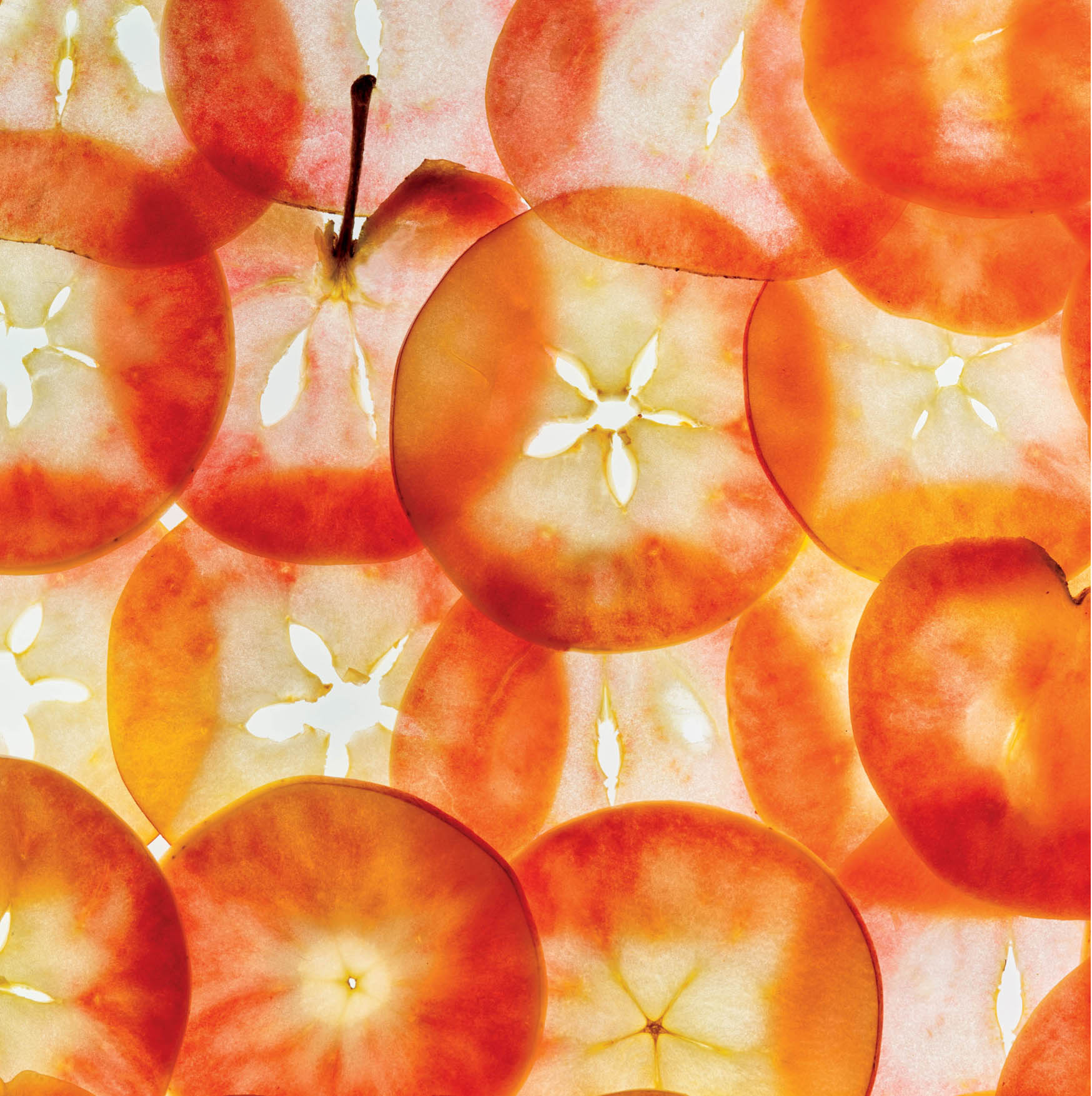
There’s always one in every barrel!—Thinly slicing fruits and vegetables and putting them on a light box was a grand experiment. With these compositions an important consideration is how to arrange an apparently arbitrary grouping while maintaining an underlying structure. With these Pink Lady apple slices, I intentionally left one apple stem intact so that there was something unique and differentiated for the viewer’s eye to begin processing the image.
Nikon D850, 100mm Zeiss Makro-Planar, seven exposures with shutter speeds ranging from 1/40 of a second to 1.6 seconds, each exposure at f/14 and ISO 64, tripod mounted.

Of all the magical elixirs that make up a successful photograph—or indeed any visual image—composition is perhaps the most fundamental, and at the same time one of the most elusive. What makes a composition “good”?
We may not know what makes a composition good, but some compositions resonate, and we instinctively recognize good composition when we see it.
We also know that composition is the fundamental scaffolding of image-making. If you get it wrong in the camera, composition is the hardest element of an image to fix in post-production. Indeed, sloppy compositions often cannot be (and should not be) repaired in Photoshop.
Without an interesting and exciting composition, a photo will appear rudderless, empty, and lack compelling interest. The scene that was captured may be pretty, but the resulting image won’t catch the eye and fire the imagination.
Delving a little deeper, after acknowledging the importance of composition, we come to the realization that the only rule is that there are no rules. It’s indeed hard to create any unified theory of compositional construction that bears up across a wide universe of image-making. But as I already observed, we instinctively recognize good composition when we see it. There is an undeniable strong emotional response when a composition resonates with the subject matter of an image.
As the photographer Henri Cartier-Bresson put it in the context of his own work, in addition to capturing the decisive moment in a composition, there needs to be an instinctive sense of geometry of the situation.
Thus, composition is crucial, and recognizable to both photographers and the viewers of their images. However, attempts to define “good composition” and, more importantly, to convey rules for good compositional construction don’t work.
The best compositions contain an element of the unexpected: Expect the unexpected!
Embracing the unexpected means becoming comfortable with spontaneity, serendipity, and change as a part your artistic practice.
Expecting the unexpected is probably the only viable “rule” of composition. Codification of composition risks eliminating experimentation and spontaneity, vitiates unexpected serendipity, and violates this “rule.”
Hey, there are no rules! So what’s the point of this book?
Forgetting about rules, there are ways of looking at subject matter—compositions—that can be very helpful.
Composition is a process, it’s not a hard-and-fast set of rules, and it is not just the end result.
Books about composition do tend to teach composition as a subject that can be clearly divided into a system of rules, such as the so-called “rule of thirds.” These “rules” are not necessarily wrong, but they are not generally applicable, and they should not be followed slavishly. Excessively following rules inhibits creativity.
Composition is not actually a system of rules: it is a process. My goal is to help photographers with the process of composition in the absence of hard-and-fast rules.
While there are many possible ways to interact with photographic composition, the approach I take in Composition & Photography is to show how patterns and abstractions can be perceived and encouraged as an underlying and fundamental part of composition.
To abstract something is to reduce the thing to fundamentals, or to show a familiar thing in an unfamiliar light using an interesting and applicable metaphor.
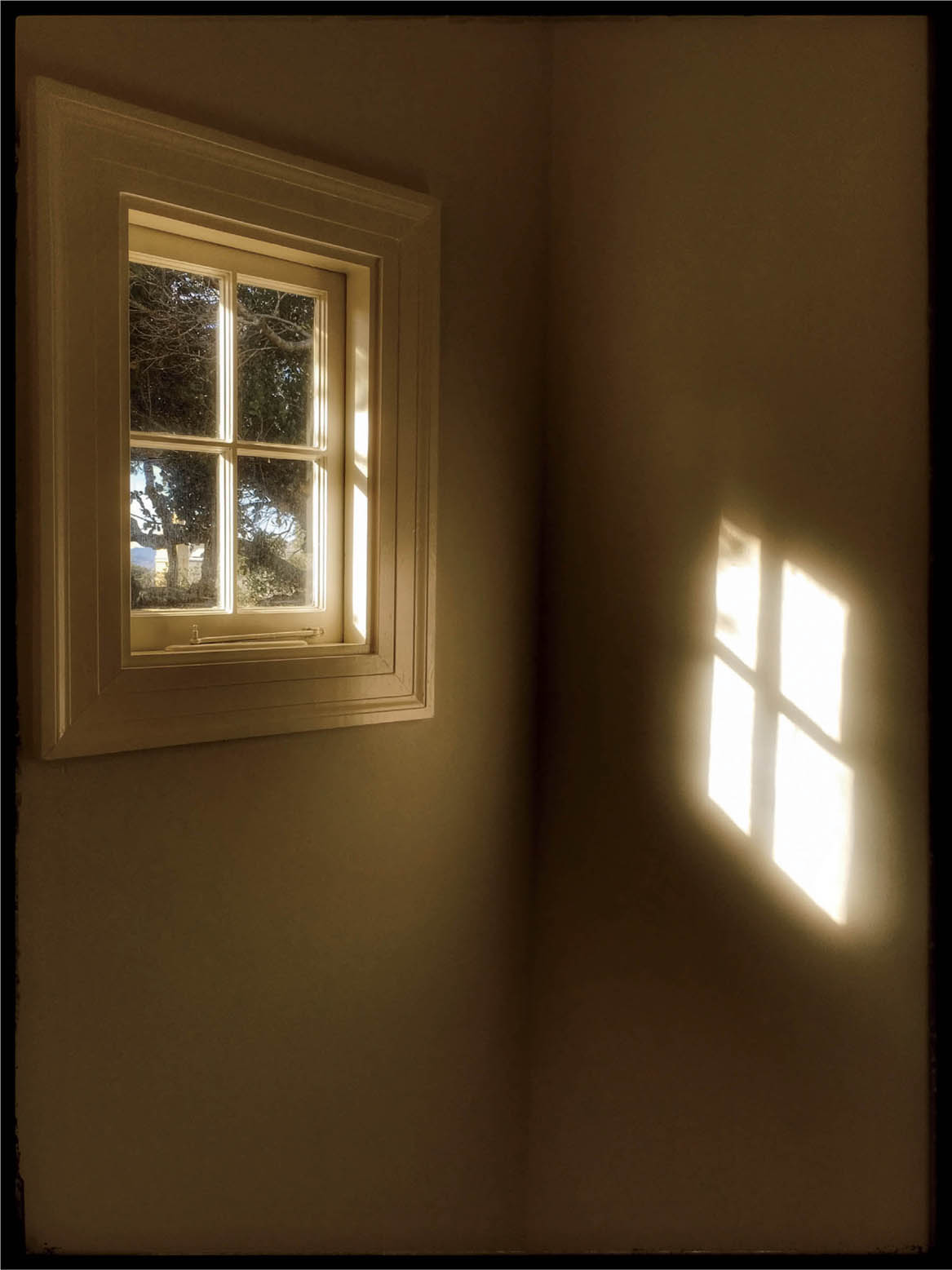
Window and Shadow—In this deceptively simple and contemplative composition, the photograph delivers a sense of enclosure while looking out the window at a brilliantly lit afternoon. The power of the composition comes from the near symmetry of the lit window and its shadow on a nearby wall in an otherwise unadorned room. This simplicity of composition adds a sense of isolation to the conversation between photographer and viewer.
Apple iPhone 6s.
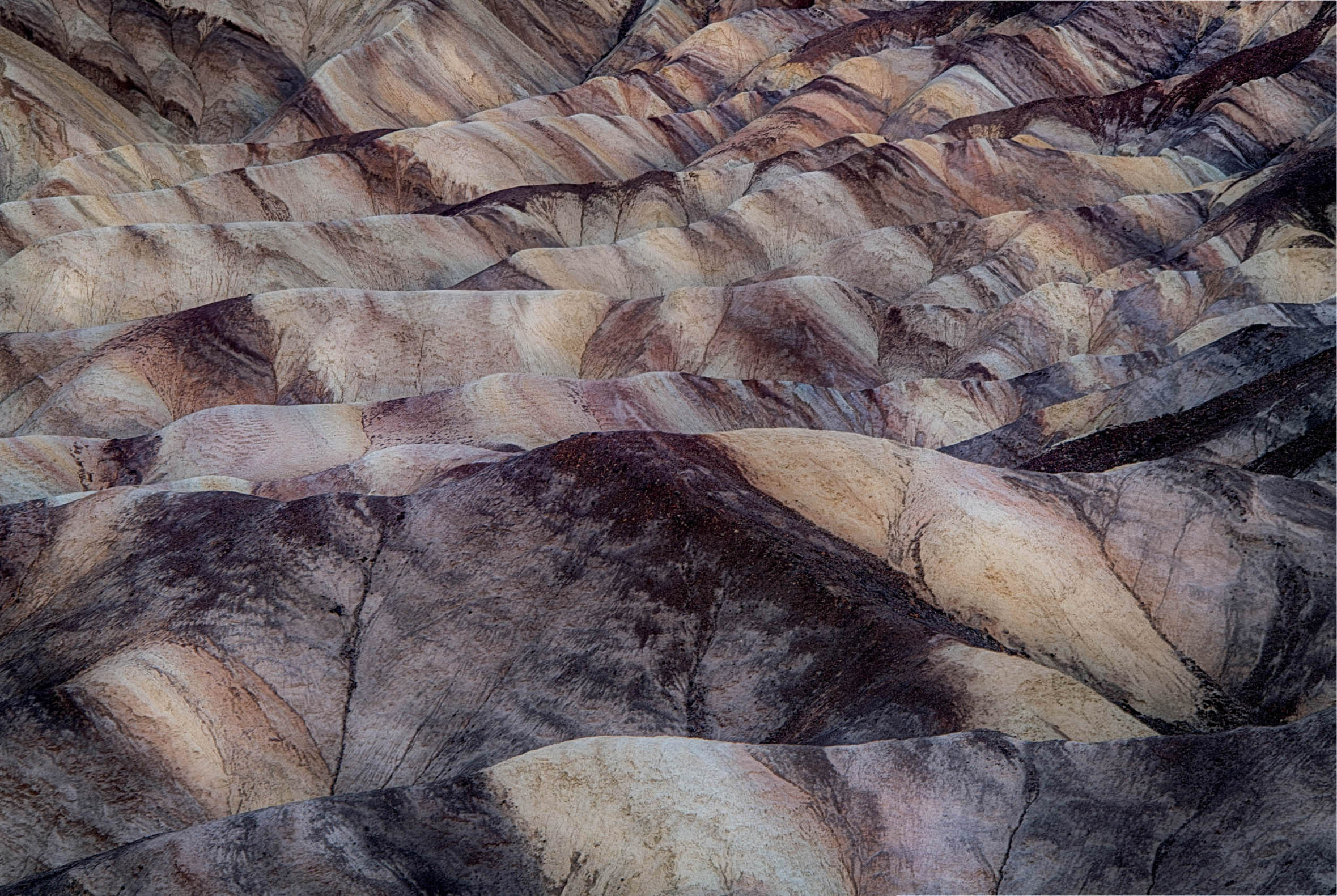
Folds in the Earth—The challenge in photographing a landscape like this view from Zabriskie Point in Death Valley, California, is creating a cohesive sense of organization from an apparently disorganized system of rocks, canyons, dry river drainages, and the folds of the earth.
In addition, there is the challenge of showing a much-photographed scene in a new and original way.
Standing at Zabriskie Point just before sunset on a late-winter afternoon, I used a moderate telephoto lens (150mm) to isolate a portion of the landscape where the striations and differences between light and dark created an almost checkerboard pattern, particularly when viewed on the diagonal.
This diagonal alternation of lights and darks creates an underlying structure and pattern that provides a compositional armature so that viewers of the image will have an underlying sense that there is an order, albeit perhaps an alien sense of order, beneath the chaos of the anarchic landscape.
Nikon D850, 150mm, five exposures with shutter speeds ranging from 1/8 of a second to 1.3 seconds, each exposure at f/20 and ISO 64, tripod mounted.
A fundamental goal of composition is to show us things that are new, that we haven’t seen before, and to show us a subject in a new way (or in a new light). So in this sense, abstraction is a key tool—and sometimes the overall goal—of composition.
Composition & Photography is a guide to visual conceptualization, and a coach for enhancing your inherent sense of composition.
When compositional serendipity comes knocking at your photographic door, do you stand ready?
My goal in writing Composition & Photography is to empower you to become the best creator of structure and form in your photographs that you can be.
To accomplish this intention, I begin with the very simplest compositional elements, such as lines and circles. As we go along, these elements are combined to make patterns. Finally, I’ll show you how to combine techniques and begin visual conversations to create powerful compositions, regardless of the genre and kind of photography you practice.
Along the way, I will show you examples of my work that are illustrations of the compositional design principles explained in the text. Each image is accompanied by caption information and the compositional idea behind the photo.
I’ve also included exercises and thought pieces with the text and images. Often these may seem open-ended and without a definitive solution. This is in the tradition of the Zen koan: with these I intend to provoke thought and test your convictions, rather than supply my solution.
In other words, Composition & Photography is intended to spur your creativity and help you begin your internal creative discussion. The examples and exercises are about flexibility, process, and ideas. Please use these ideas to enhance your own inherent creativity!
What is most important to you? You are the artist and this practice is about your art. There are no rules, and the job of your compositions is solely to support you, your creativity, and your art.
Own the power of composition, and use composition to make your own unique photographs!
My hope is that this book will help you on your journey to finding the tools and visual vocabulary that will enable you to creatively design the structure behind your imagery. It’s worth repeating again that this is not a book about rules: this is a book about making great photos!
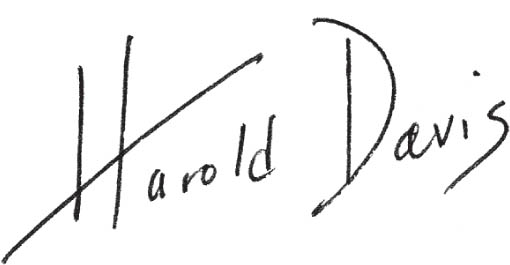
Berkeley, California
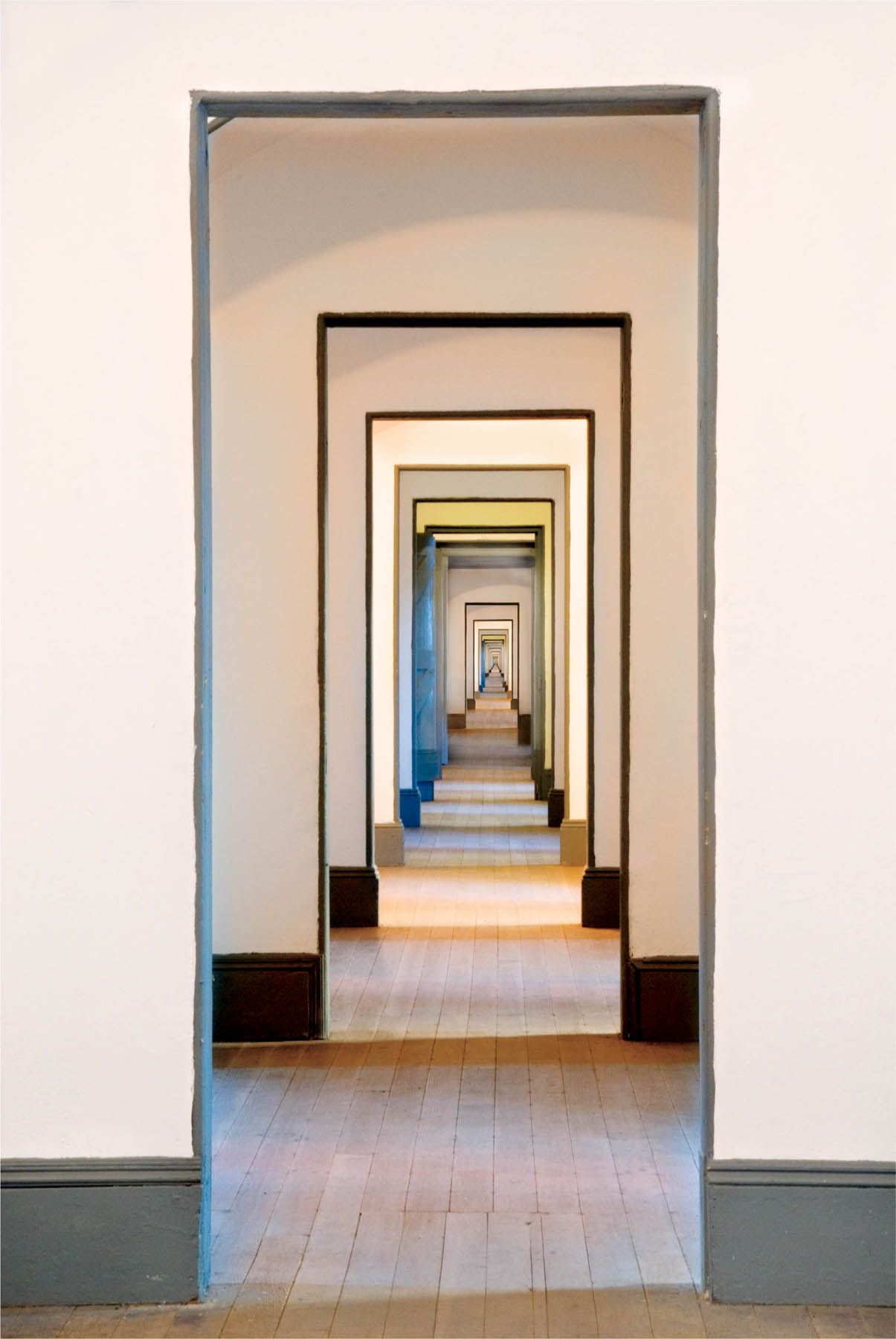
Endless Doors—The basis for this image uses a moderate telephoto lens (95mm) to capture a series of receding doors in the Officers’ Quarters at Fort Point, under the Golden Gate Bridge in San Francisco, California.
When I looked at the resulting photo on my computer, I saw six doorways, and at the end of the progression, a somewhat unattractive display case. To take this composition from mediocre to exciting, in Photoshop I removed the display case and composited the image with itself to extend the sequence of doors.
While this image belies my general tendency to get it right in camera, it was important to keep a set of fresh eyes on the composition so that I could figure out how to make something special of it.
Nikon D200, 95mm, 10 seconds at f/22 and ISO 100, tripod mounted.

Manarola—Along the rugged Ligurian coast of the Italian Riviera, the Cinque Terre region stands out for its spectacular mountainous scenery with cliffs running down to the water’s edge and colorful seafaring villages.
There are few things more exiting to me in composition than to be able to create some form of geometric order out of apparent disorganization and chaos. It was with this in mind that I framed my image of the interior of historic Manarola village.
Nikon D810, 122mm, five exposures with shutter speeds ranging from 1/250 to 1/4 of a second, each exposure at f/8 and ISO 200, tripod mounted.
